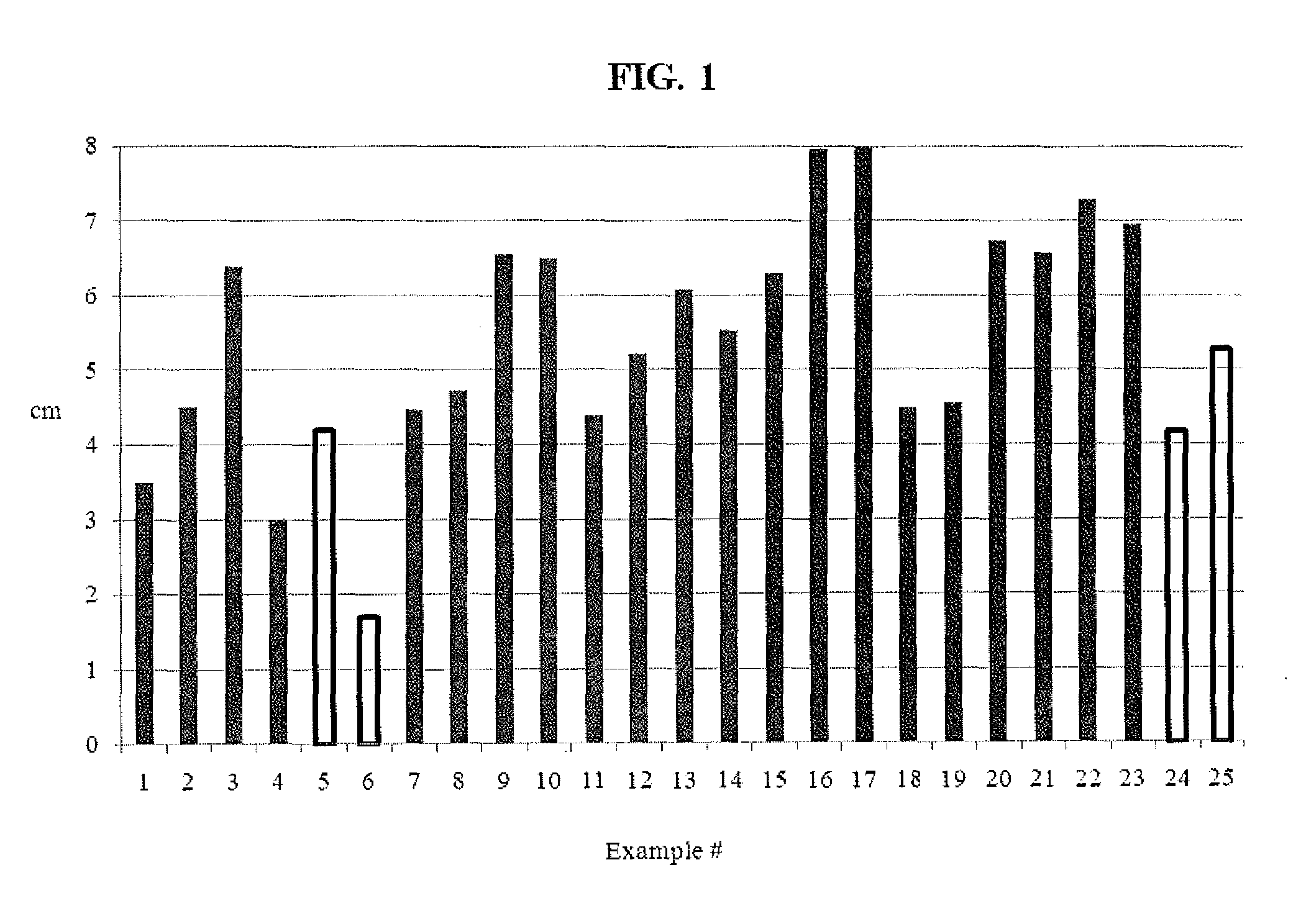Tackifiers For Composite Articles
- Summary
- Abstract
- Description
- Claims
- Application Information
AI Technical Summary
Benefits of technology
Problems solved by technology
Method used
Image
Examples
examples
[0117]Examples of composite articles are prepared. The composite articles can be used to form articles such as particleboards. The examples are made using typical production methods for manufacturing particleboard (PB) furnishes, such that methods of manufacture do not impart differences between the examples.
[0118]In the tables below, “% Solids” refers to the total amount of polymer solids imparted by the tackifier (“Tack.”) component or binder component. It is to be appreciated that inventive examples have a combination of the tackifier and binder components, but the solids imparted by the binder is not accounted for in the tables, but rather, in the subsequent description of the tables. In contrast, with the comparative examples, the solids imparted by the binder component alone is shown in the tables.
[0119]In the tables below, reference is made to various tackifier components, including Tack. 1 thorough Tack. 7. Each of these is described immediately below.
[0120]Tack. 1 comprises...
PUM
| Property | Measurement | Unit |
|---|---|---|
| Percent by mass | aaaaa | aaaaa |
| Percent by mass | aaaaa | aaaaa |
| Percent by mass | aaaaa | aaaaa |
Abstract
Description
Claims
Application Information
 Login to View More
Login to View More - R&D
- Intellectual Property
- Life Sciences
- Materials
- Tech Scout
- Unparalleled Data Quality
- Higher Quality Content
- 60% Fewer Hallucinations
Browse by: Latest US Patents, China's latest patents, Technical Efficacy Thesaurus, Application Domain, Technology Topic, Popular Technical Reports.
© 2025 PatSnap. All rights reserved.Legal|Privacy policy|Modern Slavery Act Transparency Statement|Sitemap|About US| Contact US: help@patsnap.com

